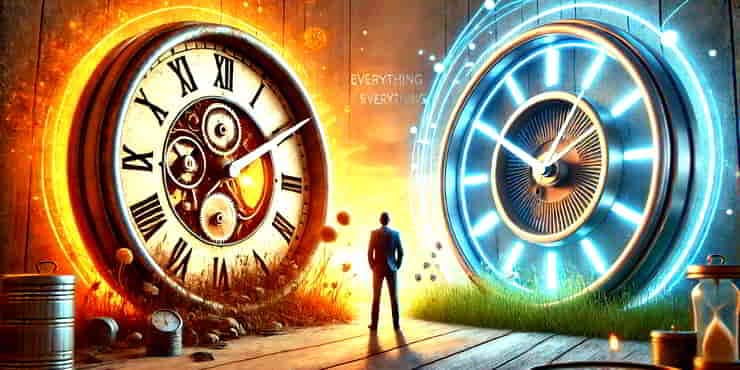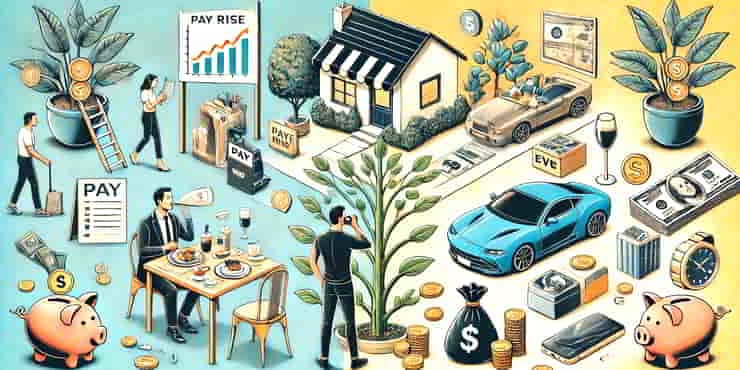Why Is Thinking So hard? How to Unlock Your Mind

Estimated reading time: 5 Min
Have you ever wondered why is thinking so hard? In reality thinking is work that uses more energy than just about anything else we do! Here are some practical clues.
Have you ever found yourself staring blankly at a problem, your mind feeling like a hamster wheel stuck in the mud?
We’ve all been there, scratching our heads and wondering, “Why is thinking so damned hard?”
Thinking, my friends, is far from a simple task.
It’s like a symphony of neural activity, a delicate dance between logic and emotion, and a battle against our own mental biases.
The thing is that understanding how our brains work, and the intricacies of thought. can empower us to think more clearly and creatively.
The Heavy Lifting of Thought
Think of your brain as a high-powered engine. Just like any engine, it requires fuel and maintenance.
Thinking demands significant mental effort and consumes energy, which is why we often feel drained after a long brainstorming or intense study session.
To add to the challenge, the world we inhabit is often a wild whirlpool of complexity.
Ideas intertwine, situations present themselves in shades of grey, and conflicting perspectives clamour for our attention.
Handling such complexity requires mental agility and resilience, so it’s no wonder we sometimes stumble along the way.
And let’s not forget the challenge of incomplete information.
We rarely have all the facts when making decisions or forming opinions.
This uncertainty can leave us feeling like we’re wandering through a fog, unsure of which path to take.
Emotions: The Uninvited Guests at the Thinking Party
Imagine trying to solve a puzzle while a swarm of bees buzzes around your head.
That’s what it can feel like when emotions cloud our thinking.
Stress, anxiety, and fear can gang up on us and make it difficult to see clearly.
But emotions aren’t always the villains in the story though.
When harnessed effectively, our emotions can help fuel creativity and drive us toward meaningful goals.
The key is to strike a balance between emotional expression and rational thought.
Beware the Bias Boogie
What are our resident cognitive biases— they’re sneaky little shortcuts that can lead us astray.
Cognitive biases can drive and mislead our natural instincts.
For example, the confirmation bias (favouring information that confirms our existing beliefs) and the anchoring bias (relying too heavily on the first piece of information we encounter), can distort our perception and lead us to faulty conclusions.
They’re liking having hidden potholes on the road to clear thinking.
By becoming aware of them, we can swerve around them and stay on course.
The Illusion of Knowing: A Fool’s Paradise
Sometimes, the most dangerous thing is not knowing what it is that we don’t know.
The illusion of knowledge can lull us into complacency, preventing us from seeking out new information or challenging our assumptions.
To avoid this mental trap, we must cultivate a degree of intellectual humility.
This means acknowledging the limits of our knowledge and being open to the possibility that we might be wrong.
The Mind: A Muscle That Needs Rest
Just as our bodies tire after a strenuous workout, our brains need rest after periods of intense thinking.
Mental fatigue can lead to decreased focus, poor decision-making, and even irritability.
So, give your mind a break!
Step away from the problem, engage in a relaxing activity, or simply allow yourself to daydream.
When you return to the task at hand, you’ll be refreshed and ready to tackle it with renewed vigour.
FAQs: Why Is Thinking So Hard?
Why does thinking feel so exhausting?
Thinking requires significant mental effort and energy. Just like physical exercise tires the body, intense mental activity can drain the brain’s resources. Although our brains take up between 2 and 3% of our body weight, they use something like 20% of our available energy!
How do emotions affect our thinking process?
Emotions can cloud our judgment and make it difficult to think clearly. However, when managed well, they can also inspire creativity and motivation.
What are cognitive biases, and how do they impact our thinking?
Cognitive biases are mental shortcuts that can lead to flawed reasoning. Examples include confirmation bias and anchoring bias. They distort our perception and decision-making.
How can I improve my thinking skills?
Practice mindfulness, be aware of cognitive biases, seek out new information, and don’t be afraid to challenge your assumptions. Also, give your brain regular breaks to rest and recharge.
Why is it important to acknowledge the limits of our knowledge?
Recognising the limits of our knowledge helps us stay open to new information and perspectives. It prevents complacency and encourages continuous learning and growth.
Summary: How To Unlock Your Mind
While thinking can be challenging, it’s also an incredibly rewarding skill.
By understanding the factors that influence our thoughts, we can take steps to think more clearly, creatively, and effectively.
So, next time you find yourself wrestling with a difficult problem, remember that thinking is a process.
Embrace the challenge, be patient with yourself, and don’t be afraid to seek out help when needed.
With practice and perseverance, you can unlock your full thinking potential and achieve your goals.
Now, go forth and think boldly!
Remember to share your thoughts in the comments, via the contact form and with friends!
😉
Richard
Useful Resources
Book: Thinking, Fast and Slow by Daniel Kahneman
Book: The Art of Thinking Clearly by Rolf Dobelli
Podcast: You Are Not So Smart
Video: Crash Course Psychology: Thinking and Language
Article: “Cognitive Biases Cheat Sheet” by Buster Benson






